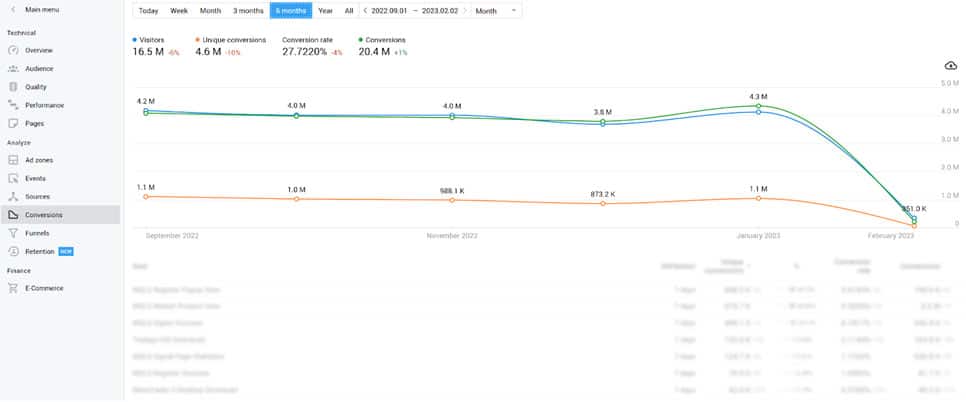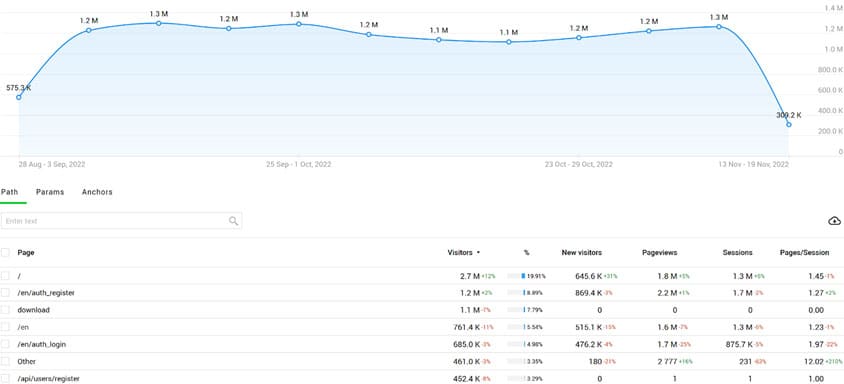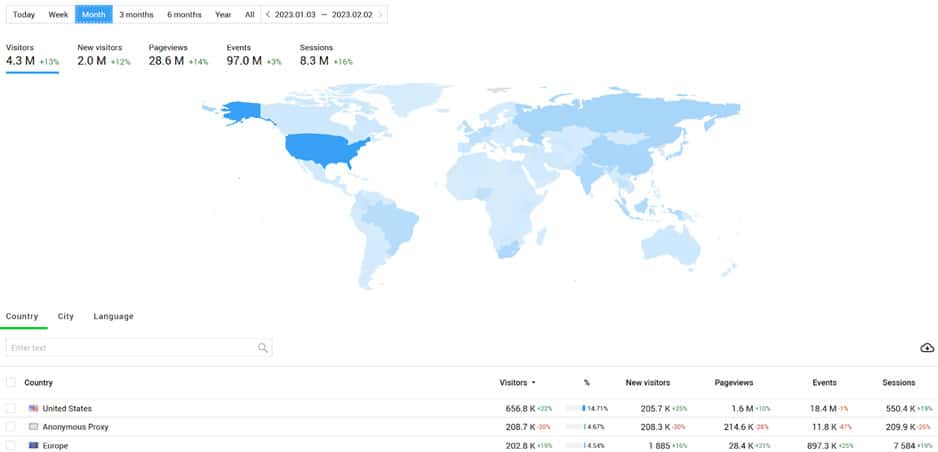How a Global Recession Has Led to a Focus on Value in E-Commerce

A global recession is defined as a period of economic decline that affects countries worldwide. The most recent global recession occurred in 2008, following the collapse of the housing market in the United States. The effects of this recession were felt globally as economies around the world struggled to recover.
According to various studies, including those by the IPA, McKinsey & Company, Pennsylvania State University, and VAB, it is recommended that brands continue to advertise during a recession. Increasing marketing efforts and maintaining a strong brand presence can lead to a larger market share in the long term, even though cutting marketing budgets may provide short-term financial relief.
As consumers’ disposable income decreased during the recession, they became more focused on value. A global recession in 2022-2023 would likely have a similarly significant impact on the global economy, as countries struggle to recover from the economic downturn. One of the areas that would likely be affected by a global recession is e-commerce.
To survive, e-commerce businesses must adapt to this new reality and find ways to provide value to consumers. This leads to focusing on offering lower prices, providing better customer service, and finding new and innovative ways to reach consumers.
Lower the price
One of the most effective ways that e-commerce businesses were able to provide value to consumers during the recession was by offering lower prices. This was achieved through a variety of methods, including negotiating with suppliers for lower prices, finding new and cheaper sources of goods, and implementing more efficient logistics systems. By offering lower prices, e-commerce businesses could attract price-sensitive consumers looking for ways to save money.
E-commerce companies can use website analytics to implement lowering pricing wisely by analyzing consumer behavior and product performance data. By utilizing website analytics, e-commerce companies can gain valuable insights into which products are selling well, which are not, and where they may be able to reduce costs.

For example, an e-commerce company that sells clothing may use website analytics to track the sales and conversion rates of specific clothing items. By analyzing this data, the company may identify that a particular jacket style is not selling well and may need to be discounted to boost sales.
On the other hand, the company may also identify that a particular style of dress is in high demand and has the potential to be sold at a higher price point. The company can increase sales and profitability by using this data to adjust pricing.
Another example is an e-commerce company that sells home appliances, they can use website analytics to track consumer behavior on the website. By analyzing how consumers navigate the website, the company may identify that many customers are having trouble finding the products they are looking for.

By making it easier for customers to find the products they are looking for, the company can increase the likelihood that consumers will make a purchase, which can help to offset any potential losses from lowering prices.
Pro tip: E-commerce companies can use Finteza to give customers more value by analyzing customer behavior and implementing targeted marketing campaigns. Finteza provides detailed web analytics, including data on customer interactions, purchase history, and demographics.
Improving customer service
Another way that e-commerce businesses were able to provide value to consumers during the recession was by improving their customer service. This was achieved through a variety of methods, including providing more detailed product information, offering a wider range of payment options, and increasing the speed and efficiency of delivery. By improving customer service, e-commerce businesses were able to attract more loyal customers looking for a better shopping experience.
E-commerce companies can use website analytics to improve customer service by analyzing customer behavior and satisfaction data. For example, if customers frequently visit the product page but do not make a purchase, it may be because they do not have enough information about the product. By providing more detailed product information, e-commerce companies can increase the likelihood that customers will make a purchase.
Another way to use website analytics to improve customer service is to track customer satisfaction. By analyzing customer feedback and reviews, e-commerce companies can identify areas where they can offer a wider range of payment options. For example, if customers frequently express dissatisfaction with the limited payment options available, e-commerce companies can expand their payment options to meet customer needs better.
Website analytics can also be used to identify where e-commerce companies may be able to increase the speed and efficiency of delivery. By tracking data on delivery times and customer complaints, e-commerce companies can identify areas where they may be able to optimize logistics and delivery processes.
For example, suppose customers are frequently complaining about slow delivery times. In that case, e-commerce companies can investigate ways to reduce transit times, such as by working with faster shipping providers or implementing more efficient fulfillment processes.
Expand ways to interact with customers
In addition to offering lower prices and improving customer service, e-commerce businesses also had to find new and innovative ways to reach consumers during the recession.
This was achieved through various methods, including social media to connect with consumers, targeted advertising to reach specific groups of consumers, and mobile apps to make shopping more convenient. By finding new and innovative ways to reach consumers, e-commerce businesses were able to attract new customers who were not previously shopping online.
One way for e-commerce companies to use website analytics to expand ways to interact with customers is by using social media to connect with consumers. By analyzing data on customer interactions with social media, e-commerce companies can identify which social media channels are most popular with their customers and focus their efforts on those channels.
For example, if most customers are interacting with the company on Instagram, e-commerce companies can use Instagram to connect with consumers by creating engaging content and hosting promotions.
Another way e-commerce companies can use website analytics to expand ways to interact with customers is by using targeted advertising to reach specific groups of consumers. By analyzing data on customer demographics and browsing behavior, e-commerce companies can create targeted ads that reach specific groups of consumers that are most likely to be interested in their products.

For example, if e-commerce companies have found that a significant portion of their customer base is made up of women in their 30s, they can create targeted ads that are specifically geared toward this demographic.
E-commerce companies can also use website analytics to expand ways to interact with customers by using mobile apps to make shopping more convenient. By analyzing data on customer behavior on mobile devices, e-commerce companies can identify areas where they can improve the mobile shopping experience. For example, suppose customers are frequently abandoning their shopping carts on mobile. In that case, e-commerce companies can investigate ways to make the checkout process more streamlined on mobile devices, such as by implementing mobile-optimized payment options.
Conclusion
As the global economy continues to recover nowadays, it is likely that the focus on value in e-commerce will continue. Consumers will always be looking for ways to save money, and e-commerce businesses will need to continue providing value to attract and retain customers. The businesses that can provide the best value will be the ones most likely to succeed in the long run.
In the future, businesses will have to keep an eye on changing consumer behavior, for example, the shift towards sustainable consumption, more conscious purchasing, and more informed buying decisions. E-commerce companies will have to adapt to these changes by providing eco-friendly, ethically-sourced products, and transparent supply chains. They will have to invest in technology that enables them to be more agile and responsive to changing consumer needs and preferences.
Have you read?
Mixed Reality and Its Uses by Alex Kipman.
The Value of Showing Up and Following Through by Lisa Gable.
Simple Ways to Align Your Team and Get Your Organization Running Like a Well-Oiled Machine by Carol Schultz.
Interview with Kim Gravel, Author of Collecting Confidence.
4 Steps for Pre-Planning Your Exit Strategy by Rhett Power.
Bring the best of the CEOWORLD magazine's global journalism to audiences in the United States and around the world. - Add CEOWORLD magazine to your Google News feed.
Follow CEOWORLD magazine headlines on: Google News, LinkedIn, Twitter, and Facebook.
Copyright 2025 The CEOWORLD magazine. All rights reserved. This material (and any extract from it) must not be copied, redistributed or placed on any website, without CEOWORLD magazine' prior written consent. For media queries, please contact: info@ceoworld.biz








